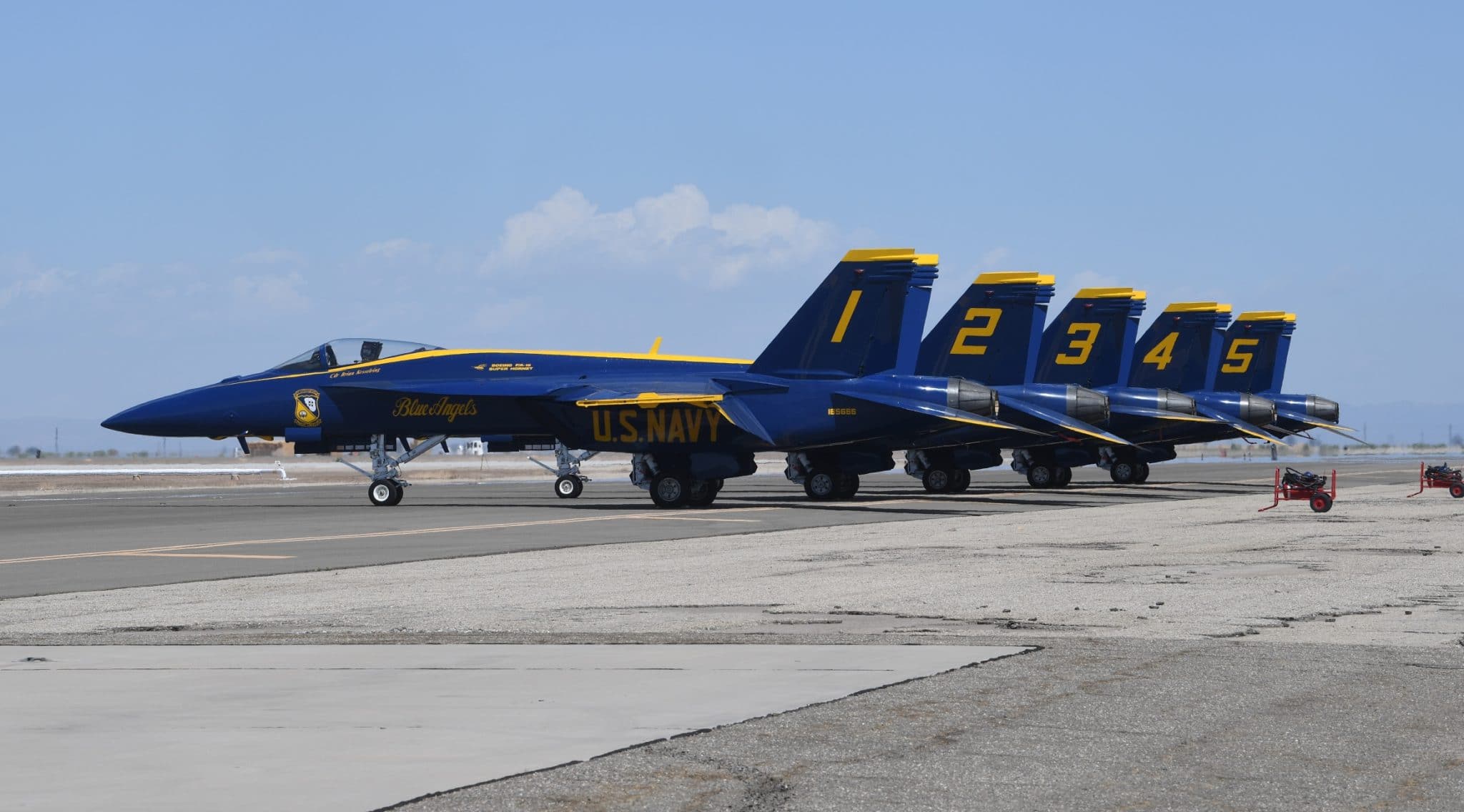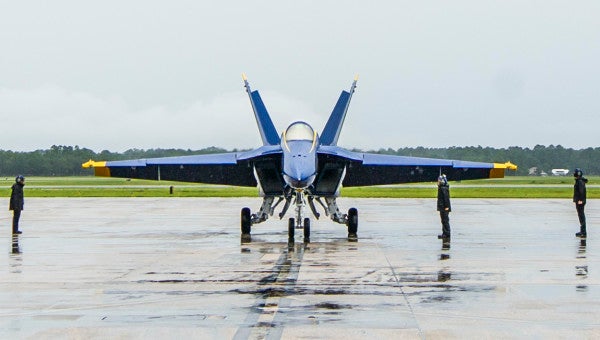
The FA-18 Super Hornet is around 25% larger than its predecessor. And bigger is certainly better! According to the former leader of the squadron, Captain Eric “Popeye” Doyle, the increased wingspans of the new Super Hornets will “blot out the sun”!

Just because it is bigger doesn’t mean that the displays you’ll see will be any slower! With a top speed of 1,190 mph and a huge jet engine belting out over 22,000lbs of thrust, it will be loud, fast, and exciting.
The Super Hornets General Electric F414 engine offers around 35% extra thrust over its predecessor, meaning plenty of speed and power.

It’s even better watching an airshow when the technology on display is cutting edge. The Blue Angels Super Hornet, also known as ‘the rhino’, is the latest, new and improved version of the FA-18 legacy jet. With new aircraft comes new challenges for the display team, but you can be there, joining in the excitement and watching them as they get to grips with their latest upgrade.

Some have drawn similarities between the latest upgrade to the Blue Angels fleet and the effects of similar upgrades in the past.
The 1960s and 1970s were considered a golden age in the development of fighter jet technology. In this period, the Blue Angels went through a similar process in acquiring the McDonnell-Douglas F4 phantom. Just as the F4 Phantom wowed crowds in this era, so too will the Super Hornet in the present day.

The F4 and Super Hornet have comparably sized wingspans, but the Super Hornet offers greater thrust and power. This means you’ll that when watching the Blue Angels perform, you’ll get the same sense of excitement that people enjoyed decades ago when viewing the latest upgrade to their fleet.

There is some smart technology aboard the FA/18 Super Hornet.
You need to become familiar with the term “fly by wire”.
While the airplane is still controlled by a human pilot, their skills are augmented by some super-smart technology. Namely computers. Fly by wire means that there is no mechanical connection between the stick and the flight controls. Instead, pilot inputs are fed into a computer that moves the control surfaces accordingly.

The maneuvers performed by the Blue Angels will be even more precise and inch-perfect! Considering they will be traveling at speeds of up to 400mph, this is a real sight to behold!

When you watch the new Blue Angels Super Hornets in action, you will be witnessing quite a lot that is unique. While the Super Hornet is itself an upgrade, the models you’ll see in a Blue Angels display are modified even further.





